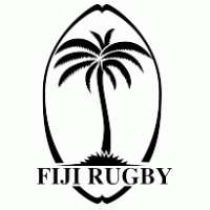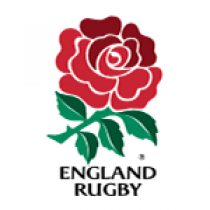Stats review - the figures behind the losing quarter-finalists
- 2843

Just 23 points separated the eight teams across four thrilling quarter-finals but what made the crucial differences and sent Ireland, France, Wales and Fiji home?
Wales (29-17 loss to Argentina)
Wales came out of the blocks firing against Argentina but ultimately the South Americans proved too dominant in too many areas over the course of the game to seal their semi-final spot.
While Wales had a better tackle success rate, 89 per cent to Argentina’s 82 per cent, they were unable to stop Los Pumas scoring when they entered the Wales 22 – as a red-zone efficiency of 4.33 point per entry from Michael Cheika’s team proved.
A disparity in possession (43 per cent for Wales) and territory (42 per cent) did not help either, with a misfiring line-out only adding to the team's problems. By the final whistle, Gatland's men had only won 60 per cent of their own thrown-ins, compared to a perfect 100 for Argentina.
"It happens in a game,” Wales assistant coach Alex King said. “It’s a contest for the ball. Argentina got up a couple of times and they won the ball, that’s testament to their line-out defence."
"There’s loads of things that happen in a game, but it stopped our momentum a little bit in that first half when we were just getting on top and getting some opportunities."
Ireland (28-24 loss to New Zealand)
It will not help Ireland’s aching hearts to know that probably the biggest reason they fell at the quarter-finals for the eighth time in eight attempts was a lack of accuracy – a trait on which they have long prided themselves.
The men in green had more carries (172 to 120), made more metres (632 to 481) and beat more defenders (31 to 22) than the All Blacks but crucially they could only score 21 points from their 14 attacking entries into the 22. This red-zone efficiency of just 1.50 points per entry – compared to a 2.94 during the pool stage – is where the damage was done.
Factor in 11 turnovers conceded by Ireland and New Zealand turning their entries into the Irish 22 into 26 points and you quickly see where the four-point difference between the sides came from.
"We had a few unfortunate errors in big moments that didn’t go our way," replacement back-row Jack Conan admitted after the match.
New Zealand’s ability to repel Ireland’s closing 37-phase attack understandably drew the headlines, but it was indicative of a wider problem for the world number one ranked side. "We've had a good run but sport can be cruel sometimes," head coach Andy Farrell said simply.
Fiji (30-24 loss to England)
Fiji dominated England in multiple areas but crucially fell short in gainline success, a failure that more than anything resulted in the Pacific Islanders being made to wait once more for a first Rugby World Cup semi-final.
Much like Ireland did to New Zealand, Fiji had many more carries than England, with 138 to 98, made four times as many offloads and had eight line-breaks to England's three. Even more impressively – or not? - Fiji were the only team across the quarter-finals to lose while registering a better red-zone efficiency than their opponents – 3.0 points compared to England’s 2.4.
The Fijians also exit the tournament with the best scrum success rate to date, losing just one put-in across five matches (versus Portugal).
But for all those impressive numbers, Fiji recorded a disappointing 41 per cent gainline success against England – a figure that not only compares unfavourably to their tournament average of 51 per cent, but more critically, lags well behind England’s 61 per cent during the quarter-final. A slower-than-usual average ruck speed (4.32 seconds) did not help either.
"We all know that we gave 110 per cent today," wing Semi Radradra said after the game. "There’s a lot of learnings as well. We have a lot of young guys, they had a big learning from this game."
France (29-28 loss to South Africa)
In a game of such small margins – and just one point – it all came down to France’s ability, or otherwise, to take their chances in the 29-28 defeat to South Africa on Sunday. "It’s hard to answer that question [on why we lost]," full-back Thomas Ramos admitted. "Being a little more precise when we had the ball."
Indeed, France came away with an average of just two points per visit to the red zone, higher than the 1.43 they recorded in the opening-game win against New Zealand, but much lower than the 3.25 of South Africa. This despite the three-time champions trailing France in terms of possession, territory and number of red-zone visits.
Just as tellingly, South Africa made eight dominant tackles to New Zealand’s three in that opening game and managed to bring France’s ruck speed up to up to 4.44 seconds against a tournament average of 4.14 seconds. "They were very strong in the rucks and tackles,” said Ramos. "Our half-backs couldn’t get clean ball."
And so it proved in the final minutes, with the game in the balance. "Our attack under the posts, at the end, if the ball comes out quicker, we would finish the action differently," head coach Fabien Galthie said ruefully.






















